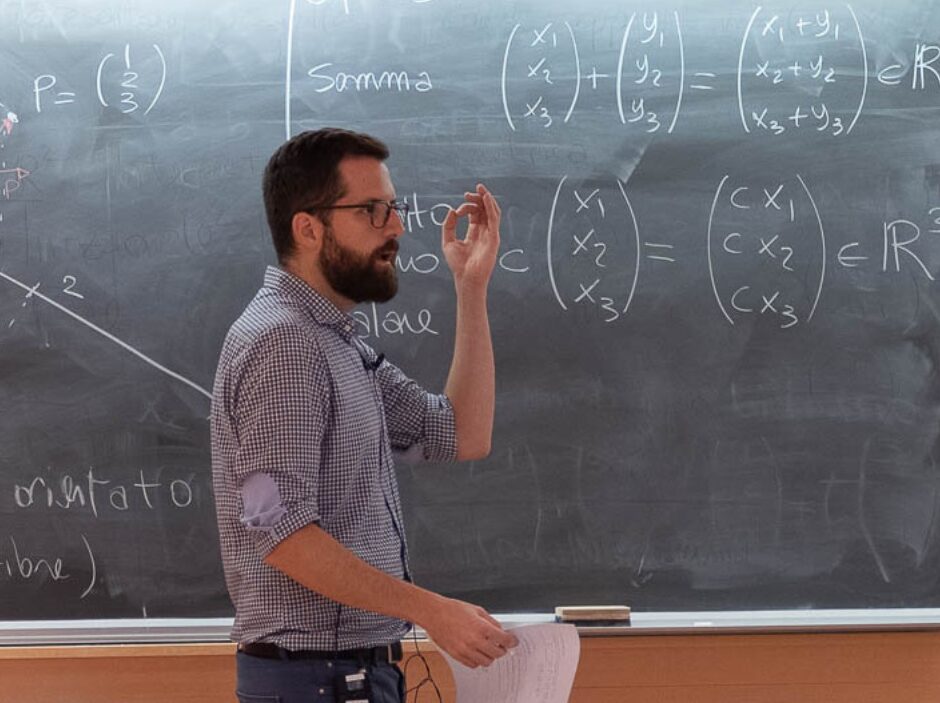
Your education took place mostly abroad. What were the stages of your journey before arriving in Milan? What do you consider to be the asset of your experience abroad?
After my five-year degree at the University of Catania and Scuola Superiore di Catania, I moved to the United States, where I spent eight years. I started with my master's thesis at Reed College in Portland, then a PhD at Purdue University in Indiana, and finally two post-docs, at the Mathematical Sciences Research Institute in Berkeley and at the University of Notre Dame, again in Indiana. During my PhD, I also spent a few months at the University of Genoa. Coming into contact with so many different people, places, and research groups, I never stopped learning new topics and techniques, and, more generally, different approaches to academia. This has deeply influenced my view of mathematics: cultivating new interests and exploring connections among different areas of mathematics is the key to successful research.
What is your research about?
My research concerns commutative algebra and algebraic geometry. In a nutshell, I study algebraic varieties, i.e. sets of points that are solutions of polynomial equations: simple examples are the line in space of equations \(x-y = x-z = 0\), or the sphere defined by \(x^2 + y^2 + z^2 - 1 = 0\).
You are currently in charge of the local unit of the PRIN 2022 Project ‘Unirationality, Hilbert schemes, and singularities’. Can you tell us about the idea and aims of the project?
Let me go a bit more into detail a bit more about my research. For some years now, I have been working on Hilbert schemes, which are geometric spaces whose points ‘parametrize’ other geometric spaces. In fact, a characteristic phenomenon of algebraic geometry is that, often, the set of all algebraic varieties of a certain type is still a geometric space. For example, the set of conics in the plane (ellipses, hyperbolas, etc.) is a space of dimension 5. Hilbert schemes are a rapidly evolving area of mathematics with connections to numerous disciplines, from representation theory to combinatorics and topology, from tensors to theoretical physics and computer science. A main goal of the project is to understand the structure of Hilbert schemes, whose complexity is due to the presence of numerous singularities. In particular, we will apply tools from commutative algebra to the local and global analysis of Hilbert schemes and, conversely, we will employ Hilbert schemes in the study of classical problems in algebra and geometry. The team is composed of the research groups in algebra and geometry of the Politecnico and of the universities of Genoa and Catania.
Can you tell us about a recent discovery concerning Hilbert schemes?
In first-year linear algebra courses, we teach our students that it is possible to parametrize a vector space of dimension \(n\) using linear functions of \(n\) variables. A classical problem in algebraic geometry asks when it is possible to repeat a similar process with an algebraic variety instead of a vector space, using polynomial functions (of any degree, not just linear). Varieties that admit such a parametrization are called rational, and they play a fundamental role in algebra and geometry.
Recently, with Gavril Farkas of Humboldt University in Berlin and Rahul Pandharidpande of ETH Zurich, we proved that the Hilbert scheme of points in 12-dimensional space has irrational components (i.e. components that cannot be parameterised by polynomial functions), solving a problem that the community had been actively wondering about for a couple of decades.
Let's go back to the beginning of your journey. When did you decide to study mathematics? And when did you start thinking about making your interest in mathematics your job?
I made up my mind at the last moment, at the end of my fifth year of high school: the Math Olympiad convinced me to study mathematics. For many years I had thought I wanted to be an engineer. I have had no more doubts ever since!
What do you enjoy most about your job?
Mathematical research constantly presents new and fascinating challenges, and having the freedom to explore them is one of themost rewarding aspects of my job. And it is very stimulating to interact every year with a new generation of students eager to learn, and to teach them the principles of mathematical reasoning that is the basis of an engineer's forma mentis.
Leaving mathematics aside, what are your hobbies and passions?
I like to hop from one hobby to the next: science fiction novels, vintage films, photography, vegan cooking, board games, metal concerts. But lately my favourite pastime is playing with my son.
